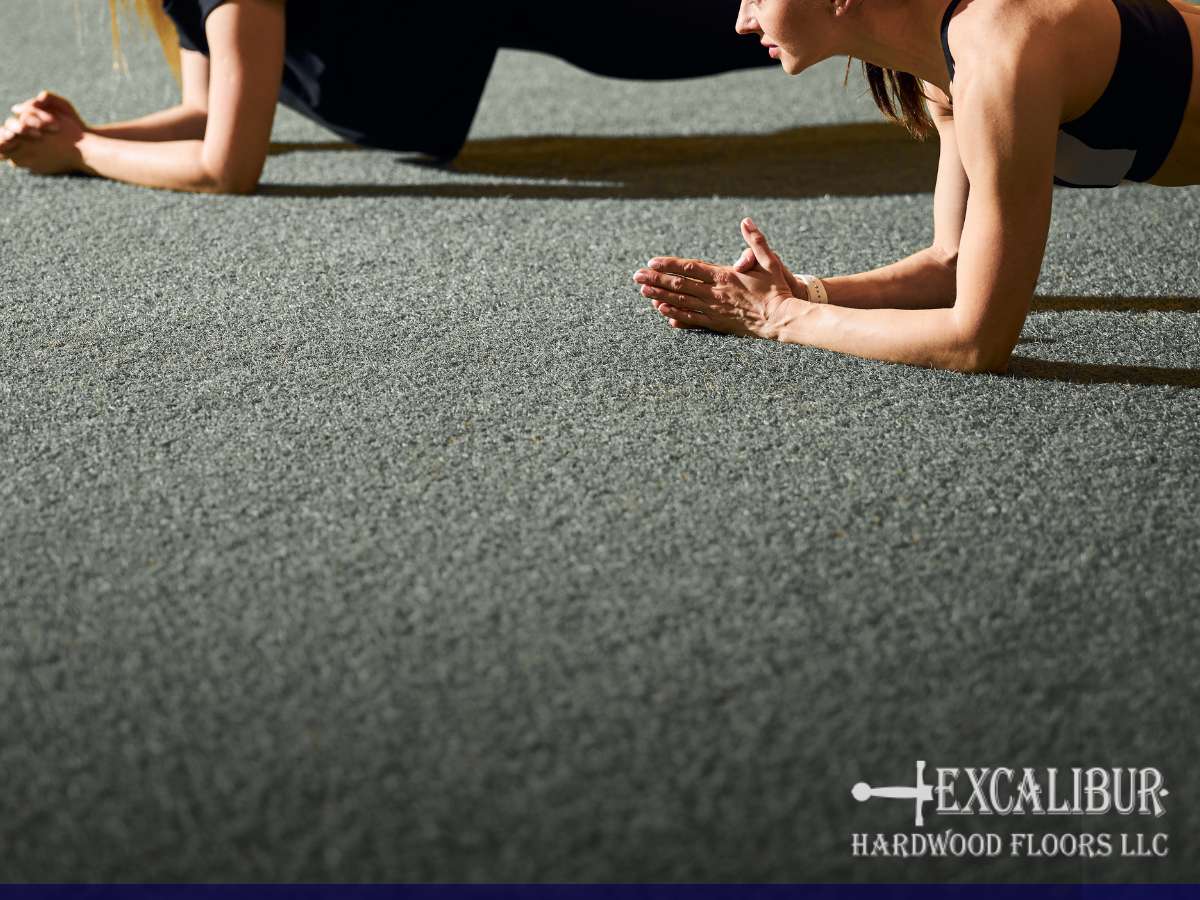Is Gym Floor Underlay Necessary? Pros, Cons & Expert Advice
Choosing The Right Gym Flooring Before Professional Gym Floor Installation
Choosing the right flooring for your gym is essential to creating a comfortable and safe environment. One key component of this process is the gym floor underlay, which is usually part of a professional gym floor installation.
But is it really necessary? Is it a good feature for the gym floor? While some gym owners swear by underlay for its ability to enhance comfort, others question its necessity and cost-effectiveness. That’s why we’ve put together this article to outline the pros and cons and help you make an informed decision.

What Is a Gym Floor Underlay & How Does It Work?
Underlay is simply the barrier that sits beneath your flooring. It’s a cushioning layer installed beneath hardwood or other types of gym flooring, and it’s usually made from materials like rubber, foam, or cork.
It acts as a shock absorber to prevent premature damage to the gym flooring. That’s because it absorbs shock from heavy equipment and high-impact exercises, reduces noise and vibrations, improves user comfort, and protects flooring by managing moisture and temperature variations.
Proper underlay can significantly extend the lifespan of your gym floor and improve its overall safety, but these benefits are only achievable with proper installation and maintenance. Otherwise, the results may fall short.
Gym Floor Underlay: Advantages & Disadvantages Explained
Here are some pros and cons of using gym floor underlay to help you decide whether it’s the right choice for your gym area before getting a professional gym floor installation:
Pros:
- Better durability: Underlay absorbs impact from equipment drops, weights, and vigorous workouts, significantly extending your hardwood floor’s lifespan by reducing wear and tear.
- Improved comfort and safety: It reduces joint stress and helps prevent injuries by providing better shock absorption and a stable, supportive workout surface.
- Effective noise reduction: Underlay minimizes echoes and vibrations, creating a quieter and more comfortable environment.
- Temperature control: It works as a barrier against moisture buildup and helps regulate temperature, preventing warping or mold issues associated with moisture damage.
Cons:
- Increased cost: Adding an underlay layer increases initial investment, which can impact budgets, especially for large gym areas.
- Complex installation: Installing an underlay adds an extra step to the gym floor installation process, potentially increasing installation time and labor costs.
- Risk of reduced stability: If you don’t install underlay properly, it can compromise flooring stability, leading to uneven surfaces. Hence the importance of hiring professionals during gym floor installation for this task.
Important Factors To Consider Before Choosing Gym Floor Underlay
Before deciding whether to include underlay or not, you should consider a few factors, such as the types of gym activities and the local climate, to name a few.
Think about the types of activities your gym regularly hosts. High-impact exercises like weightlifting or aerobics greatly benefit from the added cushioning and shock absorption provided by underlay, while low-impact workouts may not need it.
Budget considerations also play a crucial role. Underlay involves additional upfront costs, but it can offer significant savings long-term by protecting the flooring and reducing maintenance expenses. It’s equally important to follow the flooring manufacturer’s guidelines, as some hardwood or engineered floors, including residential floor options, require underlay for warranty purposes or optimal performance.
Local climate and moisture levels should be considered as well. Gyms in humid or fluctuating temperature environments can greatly benefit from underlay’s moisture-control properties, preventing issues like warping or mold growth.
Finally, remember that installing underlay increases project complexity and may require professional assistance, impacting installation timelines and costs. Evaluating these factors carefully ensures you choose the most suitable solution for your gym floor.
Top Alternatives To Traditional Gym Floor Underlay
If traditional gym floor underlay doesn’t align with your needs or budget, you can try other similar options such as:
- Engineered hardwood with built-in cushioning: This option simplifies installation and offers comfort and basic shock absorption without a separate underlay.
- Floating hardwood: It’s installed without adhesive, which naturally provides better shock absorption.
- Direct Adhesive flooring: With this option, floors are securely glued directly onto the subfloor, maximizing stability without an additional cushioning layer, ideal when minimal floor movement is preferred.
While these alternatives might not replicate all the benefits of traditional underlay, they can effectively address durability, comfort, and noise concerns depending on your gym’s specific requirements and constraints.
Talk to Arizona’s Gym Flooring Experts Today
Deciding whether to use underlay in your gym floor installation ultimately comes down to your specific goals. It’s not always a one-size-fits-all solution, which is why hiring professionals is often the best approach.
If you’re unsure about the best approach for your gym flooring project, the experts at Excalibur Hardwood Floors are here to help. With years of experience in hardwood floor installation and gym flooring solutions, our staff will guide you through the process and recommend the right option for your needs.
Contact us at Excalibur Hardwood Floors today to get started with professional insight and high-quality results that stand the test of time.





